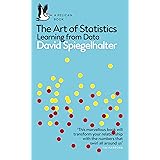Cross Validation in R with Example
What Does Cross-Validation Mean?
Cross-validation is a statistical approach for determining how well the results of a statistical investigation generalize to a different data set.
Cross-validation is commonly employed in situations where the goal is prediction and the accuracy of a predictive model’s performance must be estimated.
We explored different stepwise regressions in a previous article and came up with different models, now let’s see how cross-validation can help us choose the best model.
Which model is the most accurate at forecasting?
To begin, we need to load our dataset:
library(purrr) library(dplyr) head(mtcars)
mpg cyl disp hp drat wt qsec vs am gear carb Mazda RX4 21.0 6 160 110 3.90 2.620 16.46 0 1 4 4 Mazda RX4 Wag 21.0 6 160 110 3.90 2.875 17.02 0 1 4 4 Datsun 710 22.8 4 108 93 3.85 2.320 18.61 1 1 4 1 Hornet 4 Drive 21.4 6 258 110 3.08 3.215 19.44 1 0 3 1 Hornet Sportabout 18.7 8 360 175 3.15 3.440 17.02 0 0 3 2 Valiant 18.1 6 225 105 2.76 3.460 20.22 1 0 3 1
There are several ways to accomplish this, but we’ll utilize the modelr package to assist us.
To begin, we divided our data into two categories:
KNN Algorithm Machine Learning » Classification & Regression »
K Fold Cross-Validation in R
library(modelr) cv <- crossv_kfold(mtcars, k = 5) cv
train test .id <named list> <named list> <chr> 1 <resample [25 x 11]> <resample [7 x 11]> 1 2 <resample [25 x 11]> <resample [7 x 11]> 2 3 <resample [26 x 11]> <resample [6 x 11]> 3 4 <resample [26 x 11]> <resample [6 x 11]> 4 5 <resample [26 x 11]> <resample [6 x 11]> 5
Our data has been divided into five sets, each with a training set and a test set.
For each training set, we now use map to fit a model. In actuality, our three models will be fitted separately.
Decision Trees in R » Classification & Regression »
Model Fitting
models1 <- map(cv$train, ~lm(mpg ~ wt + cyl + hp, data = .)) models2 <- map(cv$train, ~lm(mpg ~ wt + qsec + am, data = .)) models3 <- map(cv$train, ~lm(mpg ~ wt + qsec + hp, data = .))
Now it’s time to make some predictions. To accomplish this, I created a tiny function that takes the models and test data and returns the predictions. It’s worth noting that I use as.data.frame to get the data ().
get_pred <- function(model, test_data){
data <- as.data.frame(test_data)
pred <- add_predictions(data, model)
return(pred)
}pred1 <- map2_df(models1, cv$test, get_pred, .id = "Run")
pred2 <- map2_df(models2, cv$test, get_pred, .id = "Run")
pred3 <- map2_df(models3, cv$test, get_pred, .id = "Run")
Now we will calculate the MSE for each group:
datatable editor-DT package in R » Shiny, R Markdown & R »
MSE1 <- pred1 %>% group_by(Run) %>% summarise(MSE = mean( (mpg - pred)^2)) MSE1
Run MSE <chr> <dbl> 1 1 7.36 2 2 1.27 3 3 5.31 4 4 8.84 5 5 13.8
MSE2 <- pred2 %>% group_by(Run) %>% summarise(MSE = mean( (mpg - pred)^2)) MSE2
Run MSE <chr> <dbl> 1 1 6.45 2 2 2.27 3 3 7.71 4 4 9.56 5 5 15.4
MSE3 <- pred3 %>% group_by(Run) %>% summarise(MSE = mean( (mpg - pred)^2)) MSE3
Run MSE <chr> <dbl> 1 1 6.45 2 2 2.27 3 3 7.71 4 4 9.56 5 5 15.4
Please note your machine uses a different random number than mine to construct the folds, your numbers may differ somewhat from mine.
pipe operator in R-Simplify Your Code with %>% »
Finally, consider the following comparison of the three models:
mean(MSE1$MSE) [1] 7.31312
mean(MSE2$MSE) [1] 8.277929
mean(MSE2$MSE) [1] 9.333679
In this case, values are really close however, it appears that model1 is the best model!
apply family in r apply(), lapply(), sapply(), mapply() and tapply() »




